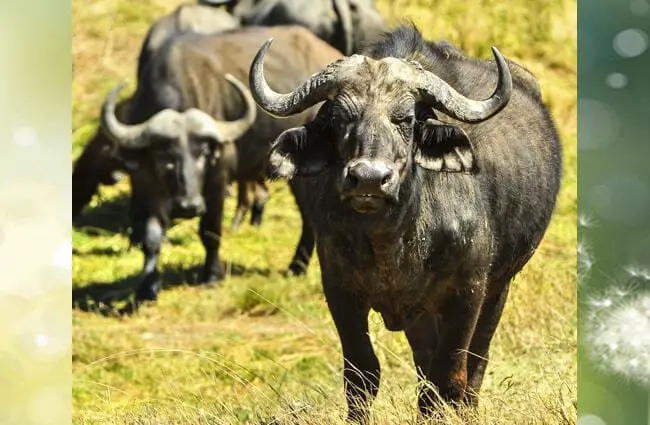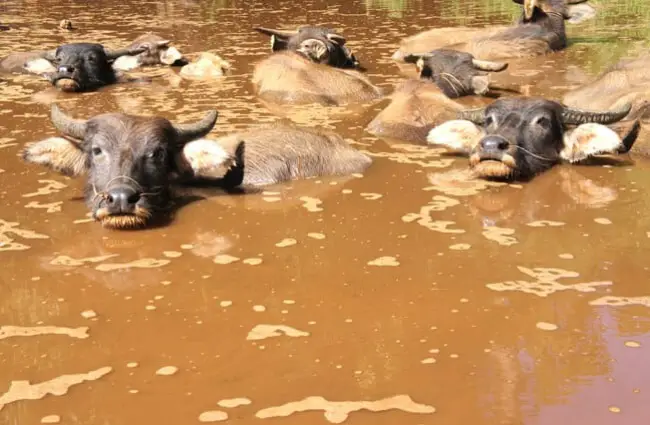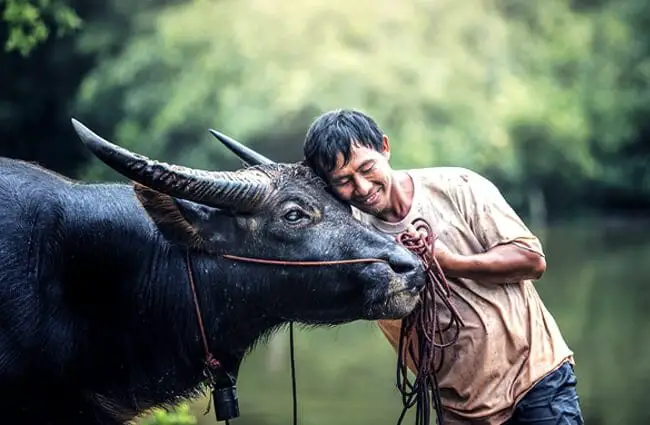The Majestic Water Buffalo: A Comprehensive Guide
Water buffalo, those imposing figures often seen wallowing in muddy waters or patiently working rice paddies, are much more than just large bovines. They represent a fascinating intersection of wild nature and human history, playing crucial roles in ecosystems across Asia and beyond. This guide delves into the world of water buffalo, exploring their biology, behavior, ecological significance, and cultural connections.

Understanding Water Buffalo Basics
Water buffalo (Bubalus bubalis) belong to the Bovidae family, which also includes cattle, bison, and antelopes. However, they possess unique characteristics that set them apart. There are two main types: the river buffalo and the swamp buffalo. River buffalo are typically larger and more robust, preferring deeper waters and are primarily found in India, Nepal, and parts of Southeast Asia. Swamp buffalo, smaller and more agile, are common in Southeast Asia, particularly in countries like Thailand, Vietnam, and the Philippines.
Physical Characteristics
Adult male river buffalo can weigh between 500 and 1200 kilograms (1100 to 2650 pounds), while females are generally smaller. They are characterized by their dark grey to black skin, sparse hair, and large, backward‑curving horns. These horns, which can reach up to 1.5 meters (5 feet) in length, are used for defense, display, and establishing dominance. Their broad muzzles are adapted for grazing on grasses and aquatic vegetation. Swamp buffalo tend to be lighter in color and have smaller horns.
Habitat and Distribution
As their name suggests, water buffalo thrive in and around wetlands. They inhabit rivers, swamps, marshes, and floodplains, but can also be found in grasslands and forests. Their distribution is primarily limited to Asia, with significant populations in India, China, the Philippines, Vietnam, Thailand, and Indonesia. Introduced populations also exist in parts of South America, Europe, and Australia.
The Evolutionary History of Water Buffalo
The evolutionary history of water buffalo is a story of adaptation and domestication. Wild water buffalo (Bubalus arnee) are believed to have originated in Southeast Asia, with their closest wild relatives being the tamaraw and the anoa, both Indonesian island species. Fossil evidence suggests the existence of water buffalo ancestors dating back more than 5,000 years. Over millennia, these animals were gradually domesticated, initially for meat and later for their draught power and milk production. The process of domestication resulted in the swamp and river buffalo breeds we see today, each adapted to different environments and purposes.

Diet and Feeding Habits
Water buffalo are primarily grazers, feeding on grasses, reeds, and other aquatic vegetation. They are remarkably efficient at converting roughage into energy. They spend a significant portion of their day foraging and can consume up to 45 kilograms (99 pounds) of vegetation daily. Water buffalo also utilize a unique feeding strategy: they submerge their heads underwater to access submerged plants, and their specialized lips and tongues allow them to effectively harvest aquatic vegetation. They are also opportunistic feeders, occasionally consuming fruits, leaves, and other plant matter.
Reproduction and Life Cycle
Water buffalo have a relatively slow reproductive rate. Females typically reach sexual maturity between three and five years of age. The gestation period lasts around 280 to 340 days, resulting in the birth of a single calf. Calves are born weighing between 70 and 120 kilograms (154 and 265 pounds). They are nursed by their mothers for approximately nine to twelve months. Calves remain dependent on their mothers for several years, learning essential skills such as foraging and social interaction. Water buffalo have a lifespan of around 20 to 25 years in the wild and can live longer in captivity.
Ecological Role and Interactions
Water buffalo play a crucial role in the ecosystems they inhabit. Their grazing and wallowing activities help maintain wetland habitats, preventing the encroachment of trees and shrubs. Their dung provides essential nutrients for aquatic plants and invertebrates, supporting the food web. They also create small pools and channels through their wallowing, providing habitat for fish, amphibians, and other aquatic animals. Water buffalo often coexist with other large herbivores such as elephants and deer, competing for resources but also benefiting from each other’s presence by creating diverse habitats.

Water Buffalo and Human Culture
For centuries, water buffalo have been integral to human societies in Asia and beyond. They are revered in some cultures for their strength, resilience, and gentle nature. In many rural communities, water buffalo are used for plowing fields, transporting goods, and providing milk and meat. Their milk is often processed into various dairy products such as yogurt, cheese, and butter. Water buffalo are also featured in traditional art, folklore, and religious ceremonies. The animals symbolize prosperity, fertility, and good fortune.
Human‑Water Buffalo Interactions: Challenges and Conservation
While water buffalo have long benefited human societies, they also face a number of threats. Habitat loss and degradation due to deforestation, agricultural expansion, and urbanization are major concerns. Hunting and poaching, particularly for their horns and meat, also pose a threat to wild populations. Hybridization with domestic buffalo can dilute the genetic integrity of wild populations. Conservation efforts are crucial to protect these magnificent animals. These include habitat preservation, anti‑poaching measures, and sustainable management practices. Protecting wild water buffalo populations is not only essential for biodiversity conservation but also for preserving the cultural heritage associated with these animals.

Encountering Water Buffalo in the Wild: Safety and Observation
If you encounter water buffalo in the wild, it is essential to maintain a safe distance and observe them respectfully. Water buffalo can be territorial and protective of their young, particularly during breeding season. Avoid approaching them closely or attempting to feed them. If they exhibit signs of aggression, such as snorting, pawing the ground, or lowering their heads, slowly retreat and seek cover. Remember that these are powerful animals and deserve your respect and caution.
Caring for Water Buffalo in Captivity
For zookeepers and animal care professionals, providing appropriate care for water buffalo requires a thorough understanding of their needs. This includes a spacious enclosure with access to both land and water, a diet consisting of grasses, hay, and supplemented nutrients, and regular veterinary care. Enrichment activities, such as providing opportunities for foraging and social interaction, are essential to promote their physical and mental well‑being. Careful monitoring of their behavior and health is crucial to detect and address any potential problems. Providing mud wallows is also extremely important, as these animals naturally enjoy wallowing in mud to regulate their body temperature and protect their skin from insects.

Water buffalo, in all their power and grace, represent a vital link between natural ecosystems and human societies. Their story is one of adaptation, resilience, and cultural significance. By understanding their biology, behavior, and ecological role, we can better appreciate these magnificent animals and work towards their conservation for generations to come.

![Red Angus Closeup of a beautiful Red Angus cowPhoto by: U.S. Department of Agriculture [pubic domain]https://creativecommons.org/licenses/by/2.0/](https://animals.net/wp-content/uploads/2020/03/Red-Angus-4-238x178.jpg)




![Red Angus Closeup of a beautiful Red Angus cowPhoto by: U.S. Department of Agriculture [pubic domain]https://creativecommons.org/licenses/by/2.0/](https://animals.net/wp-content/uploads/2020/03/Red-Angus-4-100x75.jpg)

